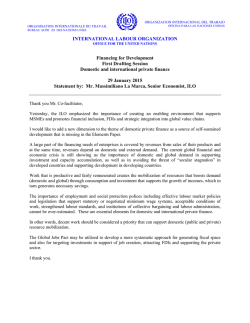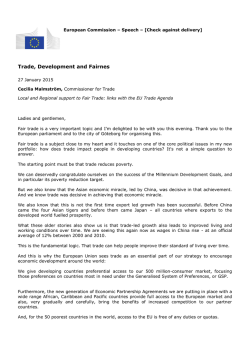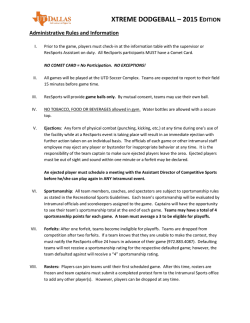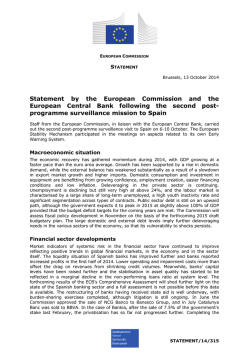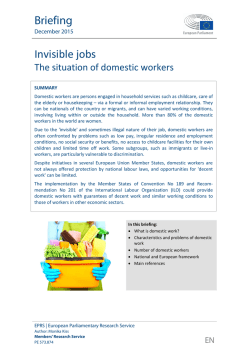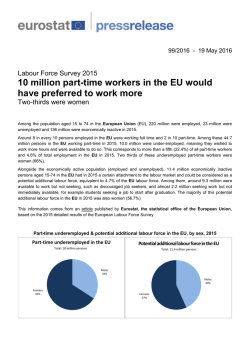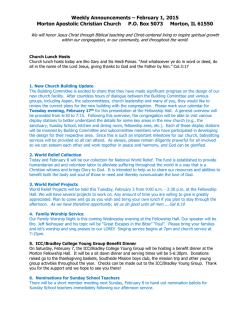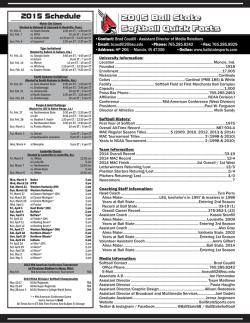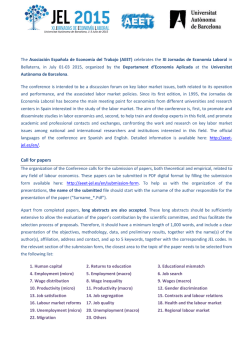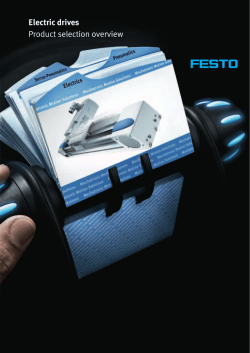
Using the birth ball for pain relief during induction of labour Using
Using the birth ball for pain relief during induction of labour Julita Fernández Arranz 1; Eva González Martínez 2; Rocío Rivas Martín 3; Paloma Gil Sánchez 4; Cristina del Barrio Cortés 5; María Goretti González Martínez 6; Laura Pedraza Piedrola 7. Birthing balls have been used for years to properly exercise and rehabilitate patients in physical therapy. The birthing ball has now found a new home in birthing centers and labour wards across the country. This tool can be effective for pain relief during labor and childbirth besides a few more beneficial effects during labour Materials and Methods : The study was performed at Gregorio Marañón Hospital birth centre. A Randomised Clinical Trial comparing the two methods of pain relief in inducction labour was carried out. In order to accomplice the study, we chose 20 primiparous women in the first stage of labour after being induced. They were allocated in two study groups by a randomised block design. One of them used the birth ball as a pain relief method,and the other one used pethidine and haloperidol injection. Summary Results: Women who asked for pain relief during the first stage of labour, were asked by their midwives about pain perception and this was reflected on the the VAS – Visual Annalogical Scale – from 0 to 10pain score scale. According to the study group they were included in, they received either a birth ball or a subcutaneous pethidine and haloperidol injection. 30 minutes post intervention, the midwife asked again about their pain perception and registered it again in the VAS scale.The experimental group had a pain relief score of 2 according to the VAS scale, in comparison to the control group which had only 1 The experimental Group of women who used birth balls had shorter first-stage labour duration (X=11h and x=13.5 h) and less need for further pain relief in comparison to the control group which required more pain relief and had a 10 13.5 11 Pethidine Birth ball longer first stage. Conclusions Clinical implementation use of thebirth ball exercises during first stage of labour could be an effective tool to reduce pain and delivery time for women during induced labour. Bibliography (1) Leung RW, Li JF, Leung MK, Fung BK, Fung LC, Tai SM, et al. Efficacy of birth ball exercises on labour pain management. Hong Kong Med J 2013 Oct;19(5):393-399. (2) Schult TM, Awosika ER, Schmunk SK, Hodgson MJ, Heymach BL, Parker CD. Sitting on stability balls: biomechanics evaluation in a workplace setting. Journal of occupational and environmental hygiene 2013;10(2):55-63. (3) Delgado-García BE, Orts-Cortés MI, Poveda-Bernabeu A, Caballero-Pérez P. Ensayo clínico controlado y aleatorizado para determinar los efectos del uso de pelotas de parto durante el trabajo de parto. Enfermería Clínica 2012;22(1):35-40. (4) HAU W, PGD MN, MAN LS, Lai-Fong H, RM MN, LAI F, et al. The use of birth ball as a method of pain management in labour. Hong Kong J Gynaecol Obstet Midwifery 2012;12:63-68. (5) Gau M, Chang C, Tian S, Lin K. Effects of birth ball exercise on pain and self-efficacy during childbirth: a randomised controlled trial in Taiwan. Midwifery 2011;27(6):e293-e300. (6) Perez P. Birth balls:use of a physical therapy balls in maternity care. Vermont: Cutting Edge Press; 2000. (7) LI W, FHKCOG FO. The Birth Ball Experience: Outcome Evaluation of the Intrapartum Use of Birth Ball. (8) Luces Lago AM, Mosquera Pan L, Tizón Bouza E. La pelota de Parto. Rev ROL enferm 2014;3(37):188-194. (9) Cots Paltor M, Jiménez Barragán M, Castán Enseñat E, Martínez Madrigal M, Oliva Santin A, Moreno Quiroga C. Beneficios de la pelota de partos (birth ball) en la sala de partos. Metas de Enfermería 2010;13(9):62-65. (10) Pérez M, Sánchez M, Ramírez MC., Sánchez. A., Gómez A., Martínez E. La introducción del uso de la pelota en el paritorio. Paraninfo Digital 2012.
© Copyright 2025
